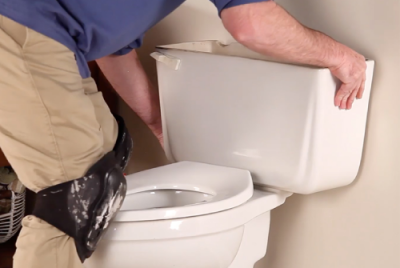Choosing the proper underlayment for your flooring can be difficult and time-consuming. Poorly chosen or installed underlayment can result in costly and time-consuming problems down the road.
It often leads to issues such as improper moisture transfer, air seepage, mould and mildew buildup, incorrect temperature regulation of your indoor environment, premature wear and tear of expensive flooring materials, structural integrity failure of subflooring, improper soundproofing and more. So, it’s important to search for a certified flooring installation expert nearby to make sure that you’re getting the most out of your flooring investment.
Here are some important aspects to consider when choosing the right underlayment for your flooring project.
-
Moisture barrier
Moisture is one of the primary factors you must consider when selecting the right underlayment for your flooring. It is critical to select a product that offers superior moisture protection like foam or rubber, as this will guard against damage caused by water and other liquids. Additionally, if you’re installing flooring in a basement or other area prone to excessive humidity, a vapour barrier should be included as part of the underlayment.
-
Engineered timber floor
Engineered timber floors require an underlay suitable for floating and glue-down installations. Make sure your underlayment is specifically designed for engineered flooring, as this will ensure proper moisture regulation and sound reduction.
-
Rubber underlay
If you’re laying a floating floor, then rubber underlay is an ideal choice. This type of underlayment will provide superior cushioning, soundproofing and moisture protection against the subfloor. It’s also easy to install, making it perfect for DIY projects.
-
Subfloor imperfections
Laminate floors are quite forgiving regarding subfloor imperfections, but you should still opt for a laminate floor underlayment to help reduce any issues. This type of underlayment is designed to fill any gaps or weaknesses in the subfloor and provide superior soundproofing and thermal insulation.
-
Vinyl flooring
Vinyl floorings are quite tricky as they require a special type of underlayment made from a combination of natural material and foam. This type of underlayment is designed to provide cushioning, soundproofing, thermal insulation and moisture protection to your vinyl flooring.
-
Cork underlayment
Cork is another popular option for underlayment as it offers superior cushioning, soundproofing and temperature regulation. Additionally, cork is a natural material that is hypoallergenic and eco-friendly.
-
Foam or rubber
When it comes to foam or rubber underlayments, they are great for providing cushioning and soundproofing but don’t offer the same level of moisture protection as other options. However, if you’re looking for superior thermal insulation and sound reduction, foam is the way to go.
-
Types of flooring
Depending on the type of flooring you’re installing, you’ll need to select the right underlayment option. For instance, if you’re installing hardwood flooring, then a plywood subfloor is recommended with a foam or rubber underlayment for soundproofing and thermal insulation. However, cork is usually the preferred choice if you’re laying a natural wood floor as it provides superior cushioning and soundproofing.
-
Hardwood floor installation
If you’re installing hardwood flooring, then it’s important to choose the right underlayment option as this will help protect your investment and ensure proper installation. As a general rule of thumb, plywood subfloors are recommended for hardwood floors, with a foam or rubber underlayment for soundproofing and thermal insulation. Additionally, make sure your underlayment is specifically designed for hardwood flooring to ensure proper moisture regulation and sound reduction.
-
Concrete subfloors
If you’re installing flooring on a concrete subfloor, then you’ll need to select the right type of underlayment to protect your investment and provide superior sound absorption. Foam or rubber underlayments are usually the preferred choices for concrete subfloors, as they provide superior cushioning, soundproofing and moisture protection.
Overall, when it comes to choosing the right underlayment for your flooring, it’s important to consider the type of flooring you’re installing, your local climate and any potential moisture issues. Selecting the right underlayment is just one step in the minor home maintenance or improvement process. There are many other factors to consider depending on your specific project.
Additionally, make sure to select an option that is specifically designed for the type of flooring you’re installing to ensure proper installation and optimal performance. It’s also important to hire a professional installer and know what are the benefits of hiring them for your project.












